Recently my wife, Jennifer, asked me how I could keep reading the same fishing books. “Is there anything new?” I’m on what might charitably be called the lunatic fringe of outdoor book enthusiasts, but I also have to admit that it’s a fair question.
The fact is, many fishing books leave one with a distinct sense of déjà vu. Any time I read another meditation on “fly fishing and the meaning of life” I get the strong urge to go fishing with a worm and bobber. I long ago realized that I have never actually learned much useful from “how to” and “where to” books.
And still, I keep reading fishing books. In part, it’s because I love fish and fishing. But it’s also because there are still some gems, even in those sub-genres that seem particularly overdone.
Here are four any angler-conservationist will find useful and enjoyable: a field guide, a how-to, a where-to, and an essay collection.
-
Field Guide to Freshwater Fishes of Virginia
By Paul E. Bugas, Jr., Corbin D. Hilling, Val Kells, Michael J. Pinder, Derek A. Wheaton and Donald J. Orth. Illustrated by Val Kells and Joseph R. Tomelleri
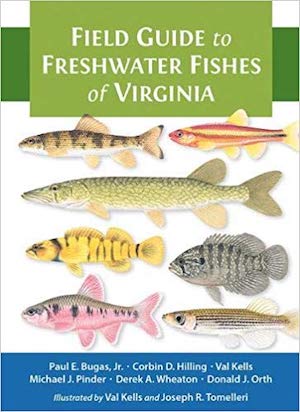
I’m at the point as an angler where a field guide is as indispensable on a trip as a rod. State-based guides can be a tremendous help in identifying the more unusual fish you encounter, but the reality is they vary in quality and usefulness. There are reference guides that are 500 to 800 pages, which are great fun for serious fish nerds. I have them, but you are not going to carry one in your day pack. The other extreme are guides reported to be fish field guides but that only cover common game species.
The Field Guide to Freshwater Fishes of Virginia is one of the best fish field guides I’ve encountered. It covers all the fish in detail, but is small enough to easily fit in a pack or carry-on bag. The illustrations are beautiful and the text focuses on information most helpful for field identification.
Virginia has a rich biodiversity of freshwater fish, and this book will help you explore that diversity whether with a fishing rod or snorkel (or just walking along a stream). The introductory section offers a great overview of freshwater fish biology and natural history. The book is a collaboration of an impressive list of fish experts, including fisheries professor and science communicator extraordinaire Donald J. Orth.
-
Catching Yellowstone’s Wild Trout: A Fly-Fishing History and Guide
By Chris Hunt
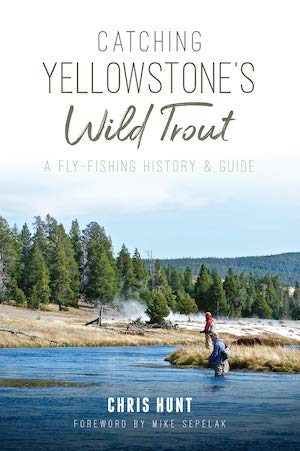
A where-to-go fishing guide runs certain risks. The author is either sharing information on destination rivers everyone knows, or is sharing information on streams that can’t support much angling pressure. Fishing writer Chris Hunt takes one of the most well-known fishing destinations in the world, and covers it with new insights and approaches. He gets you pointed in the right direction without burning anyone’s secret spot.
This is more than a where-to book. Hunt, digital media director for Trout Unlimited, loves Yellowstone and has a deep appreciation for its history. The book covers each wild salmonid species in the park, focusing on its role in the ecosystem, its history and conservation challenges.
Yellowstone’s wildlife has been the subject of countless books and documentaries, but trout are often overlooked in favor of wolves, grizzly bears and bison. Hunt shows that the fauna underwater is just as fascinating, and the efforts underway to restore native species is one of the most hopeful stories in freshwater conservation.
-
How to Think Like a Fish: And Other Lessons from a Lifetime in Angling
By Jeremy Wade
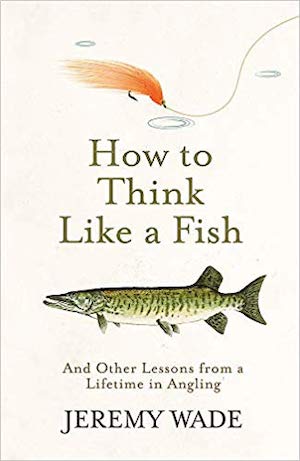
I don’t watch fishing on television; catching a fish is not a spectator sport. But I’ve long admired Jeremy Wade’s advocacy for overlooked and often-persecuted fish, and his support for unconventional fishing writers (me included).
This book promises fishing tips, and it does that. But it’s more an articulation of Wade’s fishing approach and philosophy. As such, Wade doesn’t often get into specifics about hook sizes or rigging tactics. Instead, he describes how he prepares for a new fishing situation, how he reads habitat, how he focuses during long days on the water.
He admits his fishing for “river monsters” is a specialized pursuit, but the lessons he conveys can be used for any angler. As someone who doesn’t focus on giant fish (and, at times, I go the opposite extreme), I still found this packed with useful information. While specific tactics may vary by fish, the basics of the chase, the mindset required and understanding of habitat remain similar whether you’re chasing bonefish in Mexico, native trout in Colorado or muskies in a Midwest lake.
Throughout the book, Wade makes the case that anglers can be a force for conservation, and includes tips on how to be a responsible angler. And, for fans of the show, there’s a behind-the-scenes and frank look at what goes into making a reality television program.
-
The Fish’s Eye
By Ian Frazier
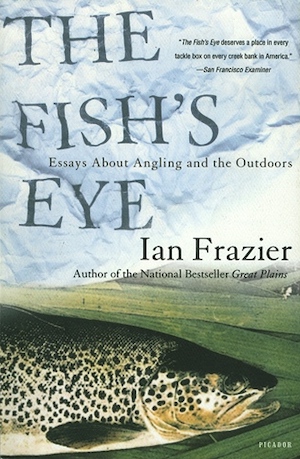
This isn’t a new book, but it remains one of the best fishing books. It’s often overlooked on the various “classic fishing reads” lists. So much outdoor media currently revolves around a “fishing lifestyle,” a term that seems to pay attention to gear and clothing branding, stunning destination-based fishing experiences and Instagram-worthy photos.
Instead of this fishing lifestyle, Frazier describes what I’d call a “fishing life.” He fishes wherever he can, even if that means tossing a bait into a city canal. He fits fishing around the demands of work, family and other obligations – like most of us. But his heart and mind are never far from the water. A long-time New Yorker writer, Frazier describes even a trip to pond with fresh insight and beautiful writing. It’s a gem. Even if you’re burned out on outdoor writing, this is the book to restore your faith.
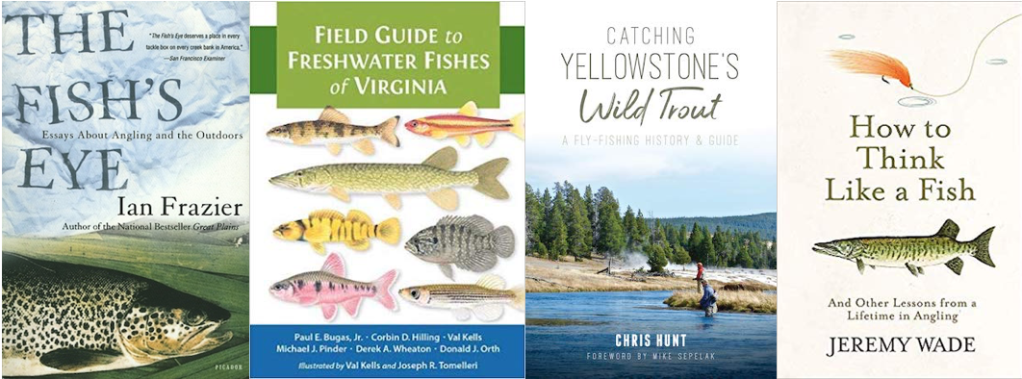



My favorite fish books “Year of the Gar” and “Snakehead” . I got to attend a class last month with the authors and Illustrator of “Freshwater Fishes of Virginia”